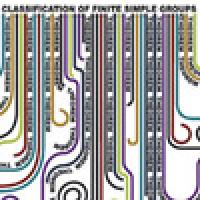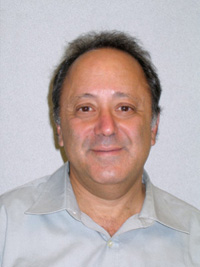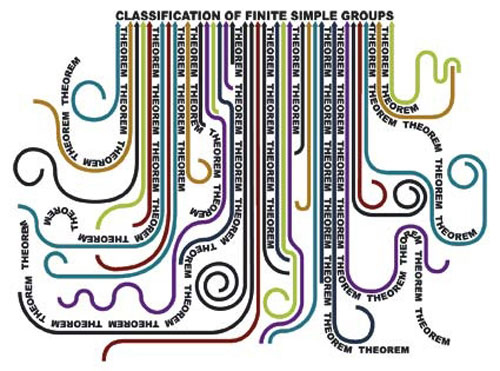
Rewriting the enormous theorem
If you've ever felt disheartened by being told you need to rewrite an answer or revise a piece of work, then think yourself lucky. A group of mathematicians are part way through the Herculean task of rewriting the longest proof in mathematics – that of the classification of finite simple groups.

Ronald Solomon.
The theorem has a long history. "Groups were first introduced implicitly around 1770 by Lagrange," says Ronald Solomon, one of the mathematicians involved in the rewriting effort. Joseph-Louis Lagrange wanted to find formulae to give you the solutions to certain types of equation, like the familiar formula you learnt at school for solving quadratic equations. "He was trying to investigate that for higher degree equations, for equations of degree five or above. He began to realise that the concept of symmetry among the [solutions] of an equations was going to be a useful idea."
The role of symmetry in algebra might seem surprising, as most of us are used to thinking of it in terms of reflections, rotations and other such operations on physical objects or geometric shapes. But symmetries of these very different objects are fundamentally the same. Eventually, in the 1830s, Évariste Galois developed group theory – the mathematics to describe symmetry. (You can read more about Galois and his work in Stubborn equations and the study of symmetry and an introduction to group theory The power of groups.)
"Groups can be thought of as molecules, in which the atoms are the so-called simple groups," says Solomon. Just as you can build any counting number out of prime numbers, you can build any group out of simple groups. Just sixty years after Galois introduced the concept of groups, Otto Hölder asked: what are all the simple groups? "This [question] was impossible, a wild dream at the time. But finally, starting in the 1950s, it started to seem possible." Over the next fifty years hundreds of mathematicians contributed to the effort to prove the classification of the finite simple groups. (You can read more about the result in An enormous theorem.)
"This was an attempt to produce something that was analogous to the periodic table for the elements, for all the groups," explains Solomon. "But the special challenge in maths that you don't have in chemistry, is that in chemistry no one tries to prove you've discovered every possible element. Next year someone might discover a new element and nobody would be embarrassed. But if next year somebody discovers a new finite simple group, a lot of us will be somewhat embarrassed because we claim we can actually prove we know them all!"

Pulling together the strands of a very big theorem.
When the proof was finally completed it was scattered over literally hundreds of journal articles and estimated at about 15,000 pages. So in the 1980s several mathematicians, initially Daniel Gorenstein and Richard Lyons, and then shortly afterwards Solomon, began to try to bring the proof together into one place.
"We've had some additional ideas about how to improve some parts to make things more efficient, so it's not simply gluing together the existing literature," says Solomon. "But one major purpose was to have the complete proof roughly in one location and accessible to people." The new proof will still be big though, very big. It is most likely to be in ten volumes and stretch to about 6-7000 pages. And this is despite one other small change: "One thing I noticed in the earlier [papers] was that the type-font was larger. So one of our big contributions is smaller fonts!"
The new version will make it easier for all mathematicians to come to grips with this important result and the mathematics used to prove it. And the proof, both how it was produced and this project to revise it, shows how important collaboration and building upon existing work is for mathematicians. "Lagrange, Gauss, Abel and Galois, all these people influenced each other. They're all geniuses with strokes of incredible inspiration, but they were also all feeding off and learning off each other. And that's how theory grows and becomes more coherent and better understood as it goes along."